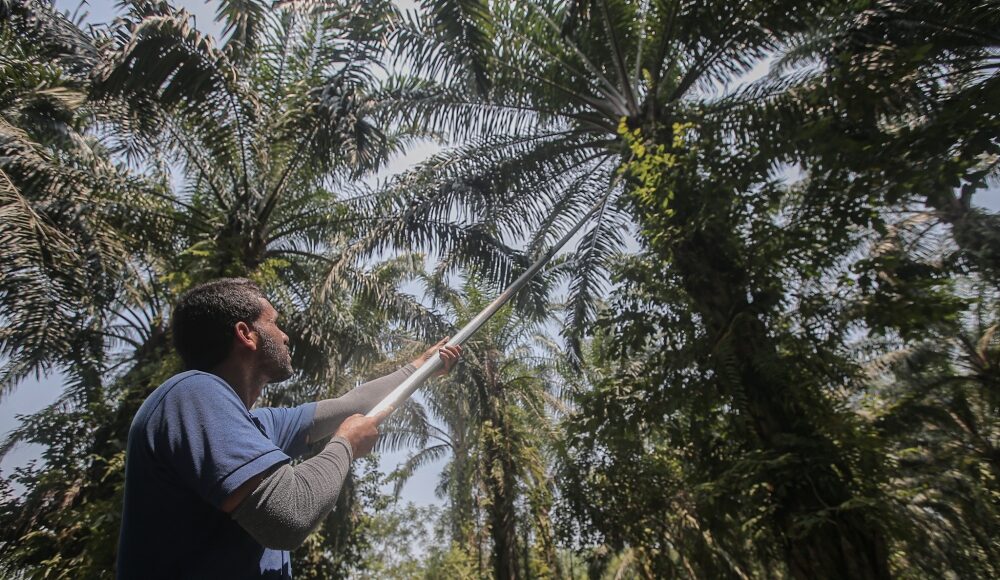MAY 28 — Palm oil has come a long way since assuming leadership of the global oil and fats business.
It accounts for the largest share, more than a third, of the world trade in oils and fats.
Malaysia can claim to have started the expansion.
Indonesia is now the largest producer. Malaysia is second.
But unlike Indonesia, Malaysia has reached the limit in production because of land constraints.
This has stabilised at about 6 million hectares.
Malaysia has always respected the need to refrain from encroaching into environmentally sensitive permanent forest areas. We value biodiversity.
To increase production, Malaysia is trying hard to increase yield.
It is not easy because unlike Indonesia, Malaysia is very dependent on foreign labour to harvest the fruits.
But Malaysia is intensifying her research and development (R&D) on breeding through Malaysian Palm Oil Board (MPOB) to deliver better yield.
At an average of 4 tons per hectare per year, the yield is far behind the theoretically possible yield of 17 tons.
We may reach there one day.
The Malaysian Palm Oil Association (MPOA) is the industry group that has always been committed to the betterment of the industry.
Compared to soy or sunflower, which require up to nine times more land to yield the same output, palm oil’s efficiency is unmatched. — Picture by Farhan Najib
MPOA brought together a few plantation groups established in the early years of the industry, including RGA, United Planters and MOPGC.
I recently attended a dinner celebrating 25 years of MPOA.
Many veteran industry captains came to honour the occasion.
Tun Raja Alias, a much recognised leader of Felda, was there to receive a special award.
MPOA chairman, Dato Lee of IOI Corporation, lamented about the low interest among the young generation to join the industry.
In a world quick to vilify, palm oil stands as an unassuming titan, quietly powering our lives while weathering a storm of criticism.
Found in half of all supermarket products, from lipstick to instant noodles, this ubiquitous oil is both a hero and a scapegoat of modern industry.
Yet, amidst the clamour, palm oil behaves not as a villain, but as a gentleman; resilient, reform-minded, and indispensable.
Imagine a crop that produces 35 per cent of the world’s vegetable oil on just 10 per cent of the land allocated to oilseeds.
This is palm oil’s silent superpower.
Compared to soy or sunflower, which require up to nine times more land to yield the same output, palm oil’s efficiency is unmatched.
In an era of shrinking arable land and growing populations, this efficiency isn’t just impressive, it’s critical.
To shun palm oil would mean swapping it for far thirstier, land-hungry alternatives, exacerbating environmental strain.
Palm oil’s detractors rightly highlight its historical ties to deforestation and biodiversity loss.
Yet, like a gentleman acknowledging past missteps, the industry has embarked on a transformative journey.
The Roundtable on Sustainable Palm Oil (RSPO), established in 2004, now certifies 20 per cent of global production, mandating zero deforestation, peatland protection, and fair labour practices.
Major producers like Malaysia and Indonesia have halted new plantation expansions in primary forests, while companies such as Sime Darby invest in satellite monitoring to combat illegal logging.
These aren’t mere pledges, they’re measurable actions.
Since 2018, deforestation linked to palm oil has fallen by 60 per cent in Southeast Asia.
Malaysia now boasts of zero deforestation.
Behind the headlines are millions of smallholder farmers, families in rural Indonesia, Malaysia, and Nigeria, for whom palm oil is a ladder out of poverty.
The crop generates US$20 billion (RM84.5 billion) annually for Indonesia alone, funding schools, clinics, and infrastructure.
Critics in wealthier nations, whose ancestors levelled forests for industrialisation, now demand developing countries forgo similar growth.
Yet palm oil offers a paradox: it is both a development tool and a sustainability test case.
The challenge lies not in boycotting it, but in ensuring its benefits reach those who need it most.
Swapping palm oil for alternatives like soy or coconut is no panacea.
Soy cultivation drives deforestation in the Amazon, while coconut farming’s water intensity strains arid regions.
Even olive oil, celebrated in Mediterranean diets, requires 3,000 litres of water per litre of oil, compared to palm’s 1,200.
Palm oil’s sin isn’t its impact, but its visibility. As the most scrutinised oil, it faces a double standard others evade.
The path forward isn’t demonisation but collaboration.
Europe’s recent deforestation law, which targets palm oil imports, risks penalising smallholders already adopting sustainable practices.
Instead, wealthy nations should fund green transitions, supporting technologies like methane-capturing biogas from palm waste.
Consumers, too, can advocate for certified sustainable products, rewarding ethical producers.
Palm oil is no saint, but neither is it a sinner.
It is a mirror reflecting our collective demand for affordable, abundant, and sustainable resources.
To label it a “gentleman” is to recognise its capacity for reinvention and its quiet role in sustaining modern life.
The true test of global sustainability lies not in scapegoating a single crop, but in reshaping systems so that efficiency and ethics go hand in hand.
Palm oil has shown it can adapt.
The question is: Can we?
* Professor Dato Ahmad Ibrahim is affiliated with the Tan Sri Omar Centre for STI Policy Studies at UCSI University and is an associate fellow at the Ungku Aziz Centre for Development Studies, Universiti Malaya. He can be reached at [email protected]
** This is the personal opinion of the writer or publication and does not necessarily represent the views of Malay Mail.





